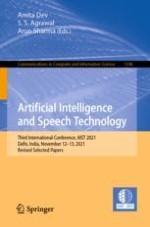2022 | OriginalPaper | Buchkapitel
Latest Trends in Gait Analysis Using Deep Learning Techniques: A Systematic Review
verfasst von : Dimple Sethi, Chandra Prakash, Sourabh Bharti
Erschienen in: Artificial Intelligence and Speech Technology
Aktivieren Sie unsere intelligente Suche, um passende Fachinhalte oder Patente zu finden.
Wählen Sie Textabschnitte aus um mit Künstlicher Intelligenz passenden Patente zu finden. powered by
Markieren Sie Textabschnitte, um KI-gestützt weitere passende Inhalte zu finden. powered by
